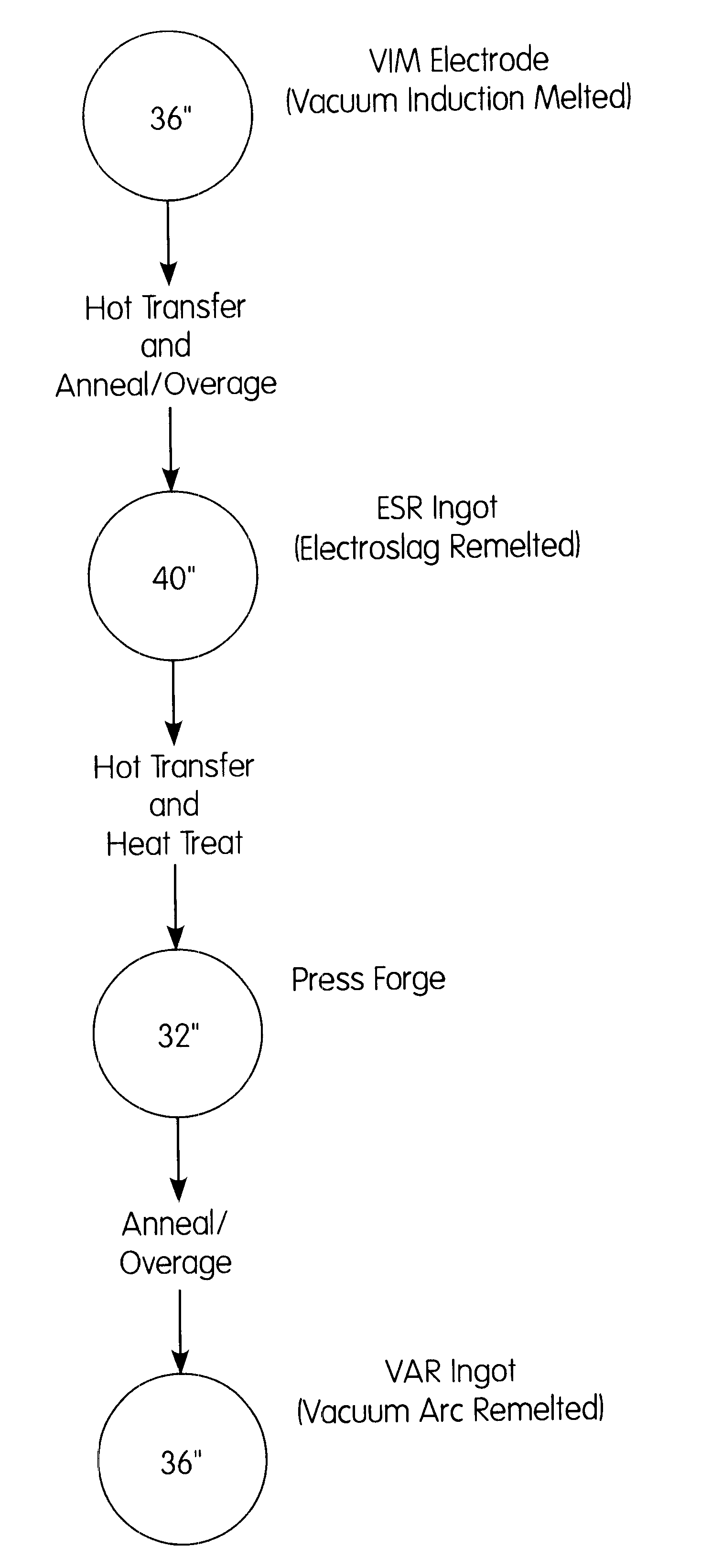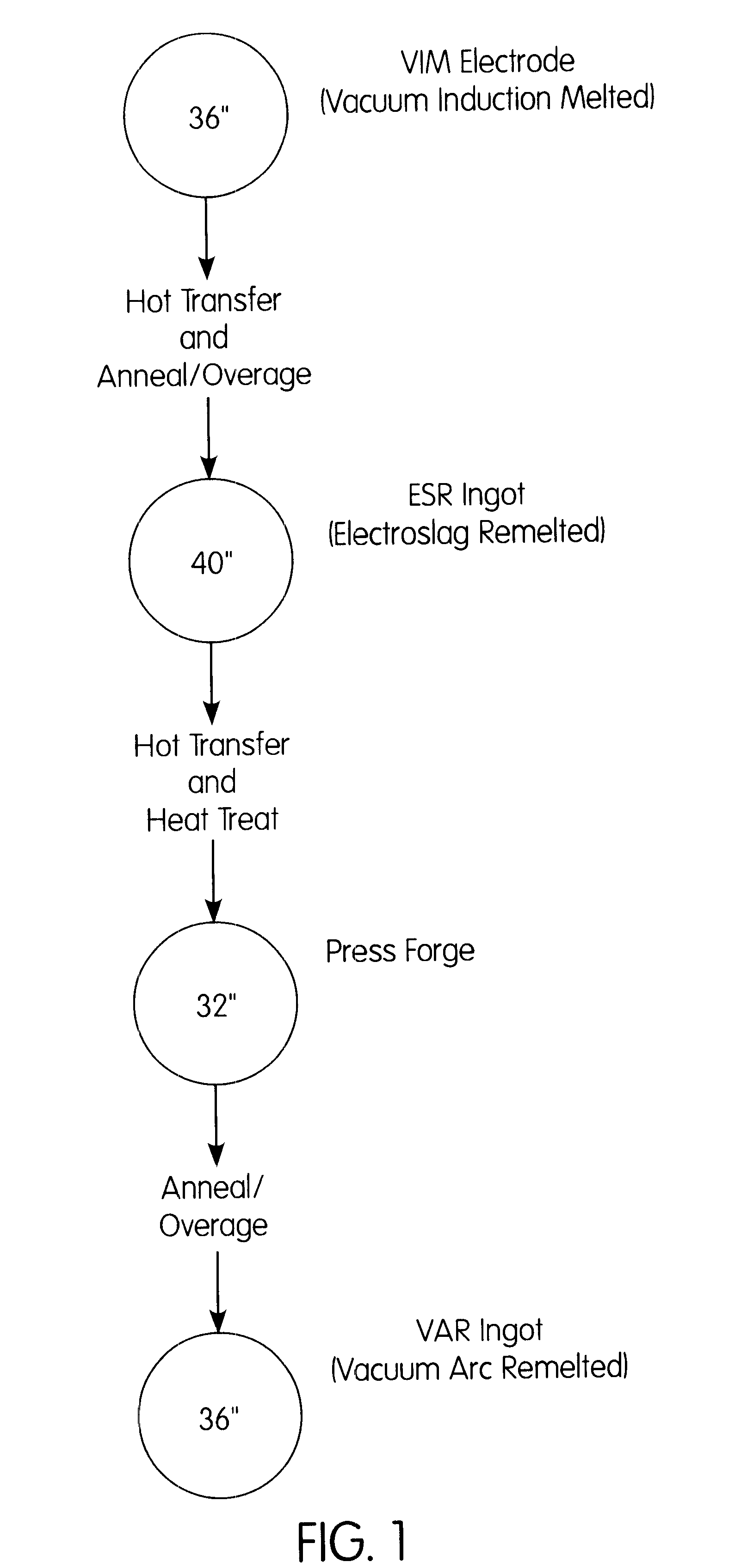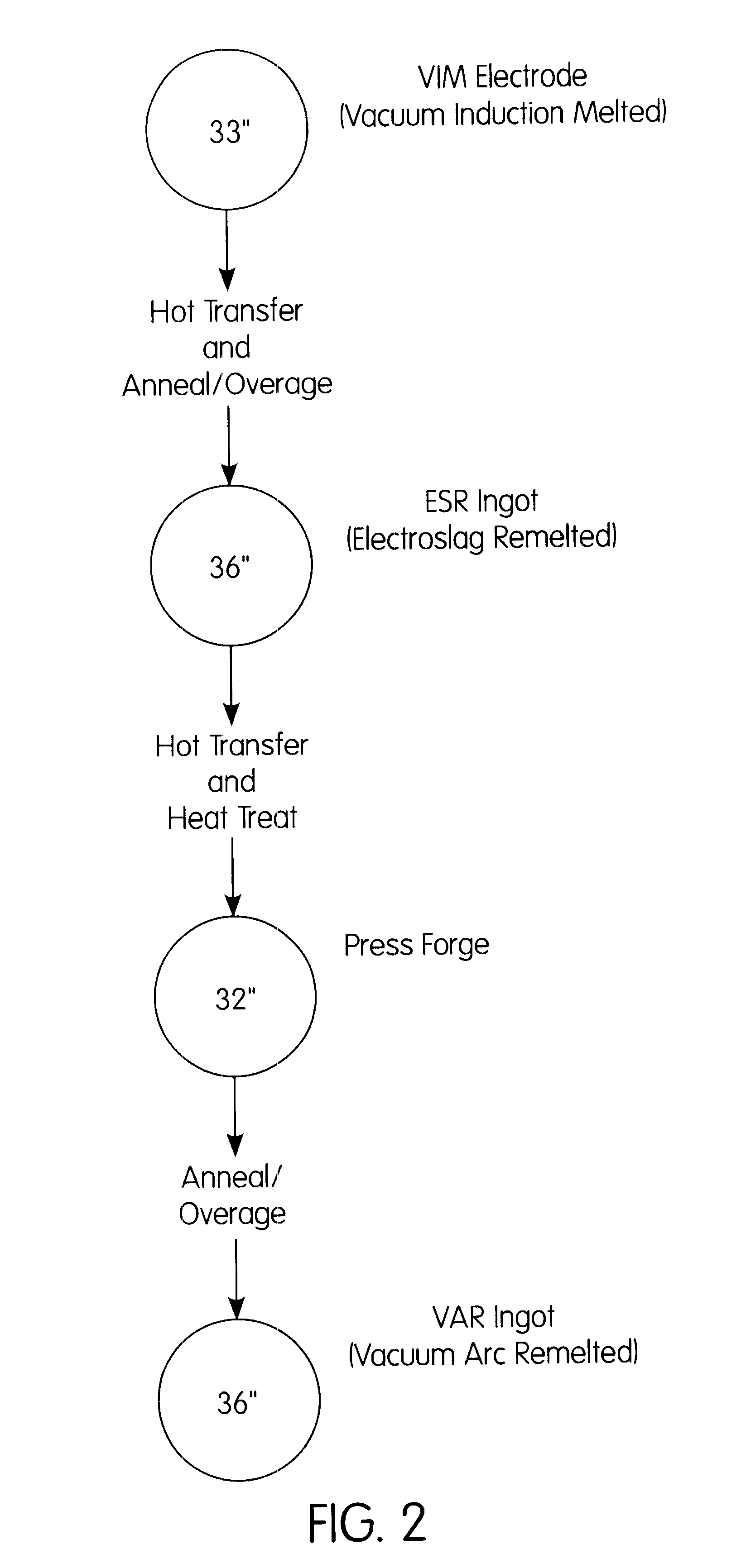Method for producing large diameter ingots of nickel base alloys
a nickel base alloy, large diameter technology, applied in metal-working equipment, welding/cutting media/materials, soldering media, etc., can solve the problems of high production cost, ingot unsuitability, and difficult production of large diameter ingots of segregation-prone materials, so as to inhibit thermal stress and inhibit thermal stress. ingot
- Summary
- Abstract
- Description
- Claims
- Application Information
AI Technical Summary
Benefits of technology
Problems solved by technology
Method used
Image
Examples
example 1
FIG. 1 is a diagram generally depicting an embodiment of the method of the present invention adapted for producing premium quality ingots of Alloy 718 with diameters greater than 30 inches. It will be apparent that the embodiment of the present method shown in FIG. 1 is, in general, a triple-melt process including steps of VIM, ESR, and VAR. As indicated in FIG. 1, a heat of Alloy 718 was prepared by VIM and cast to a 36-inch diameter VIM electrode suitable for use as an ESR electrode in a subsequent step. The VIM ingot was allowed to remain in the casting mold for 6 to 8 hours after casting. The ingot was then stripped from the mold and transferred hot to a furnace, where it was annealed and overaged at 1550.degree. F. (843.degree. F.) for 18 hours minimum.
After the anneal / overage step, the ingot surface was ground to remove scale. The ingot was then transferred hot to an ESR apparatus, where it was used as the ESR consumable electrode and was electroslag remelted to form a 40-inch...
example 2
In the above example, the ESR ingot had a diameter in excess of that which could be used on the available VAR apparatus, which accommodated a VAR electrode of up to about 34 inches ((863 mm). This necessitated that the diameter of the ESR ingot be adjusted by mechanical working. This, in turn, required that the inventors develop a suitable ESR ingot heating sequence to heat the ESR ingot to forging temperature while preventing the occurrence of thermal cracking during forging. If the diameter of the ESR ingot were to more closely approximate the maximum diameter usable on the available VAR apparatus, then the ESR ingot would be less prone to thermal cracking. Press forging or other mechanical working of the ESR ingot may be wholly unnecessary if the size of the ESR ingot were suitable for use directly on the available VAR apparatus. In such case, the ESR ingot could be delivered to the VAR apparatus immediately after the post-ESR heat treatment steps.
FIG. 2 is a diagram generally de...
example 3
FIG. 3 is a diagram an alternative prophetic embodiment of a triple-melt process within the present invention wherein the 30-inch diameter of the as-cast ESR ingot is directly suitable for use with the ESR apparatus. A 30-inch VIM electrode is electroslag remelted to a 33-inch ESR ingot. The ESR ingot is hot transferred and heat treated as described in Example 1, and is then vacuum arc remelted, without reduction in diameter, to a 36-inch diameter VAR ingot. The VAR ingot may then be homogenized and further processed as described in Example 1. The process depicted in FIG. 3 differs from that of FIG. 1 only in that the diameters of the VIM electrode and ESR ingot differ from those of Example 1, and no press forging operation or ramped heat-up to forging temperature are needed. A premium quality 36-inch diameter Alloy 718 ingot would result.
PUM
| Property | Measurement | Unit |
|---|---|---|
| Temperature | aaaaa | aaaaa |
| Weight | aaaaa | aaaaa |
| Weight | aaaaa | aaaaa |
Abstract
Description
Claims
Application Information
 Login to View More
Login to View More - R&D
- Intellectual Property
- Life Sciences
- Materials
- Tech Scout
- Unparalleled Data Quality
- Higher Quality Content
- 60% Fewer Hallucinations
Browse by: Latest US Patents, China's latest patents, Technical Efficacy Thesaurus, Application Domain, Technology Topic, Popular Technical Reports.
© 2025 PatSnap. All rights reserved.Legal|Privacy policy|Modern Slavery Act Transparency Statement|Sitemap|About US| Contact US: help@patsnap.com



